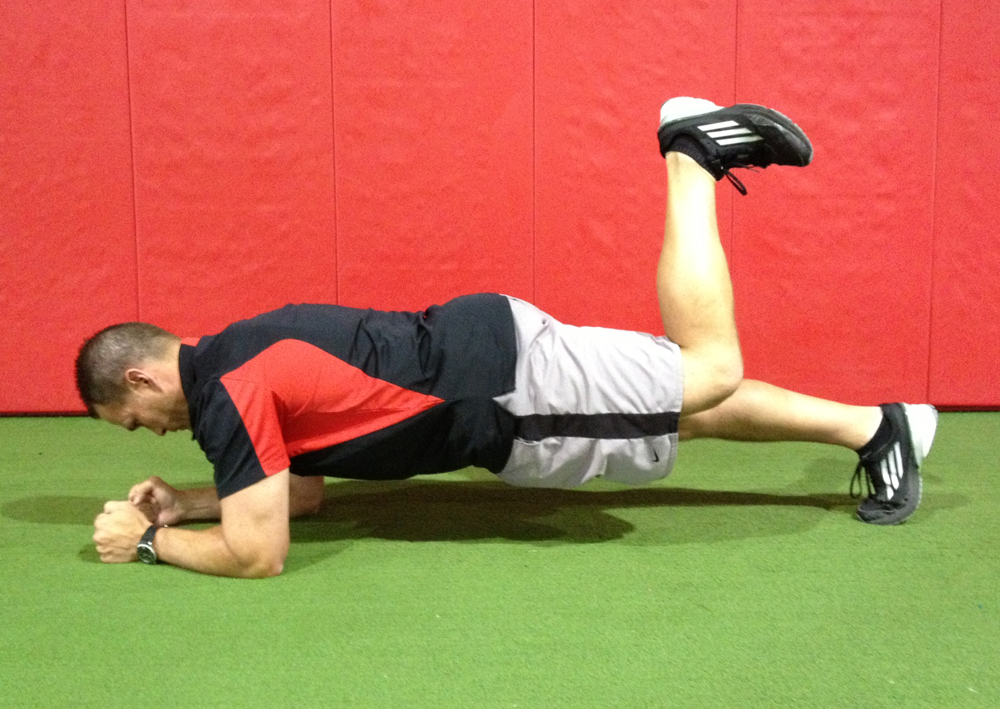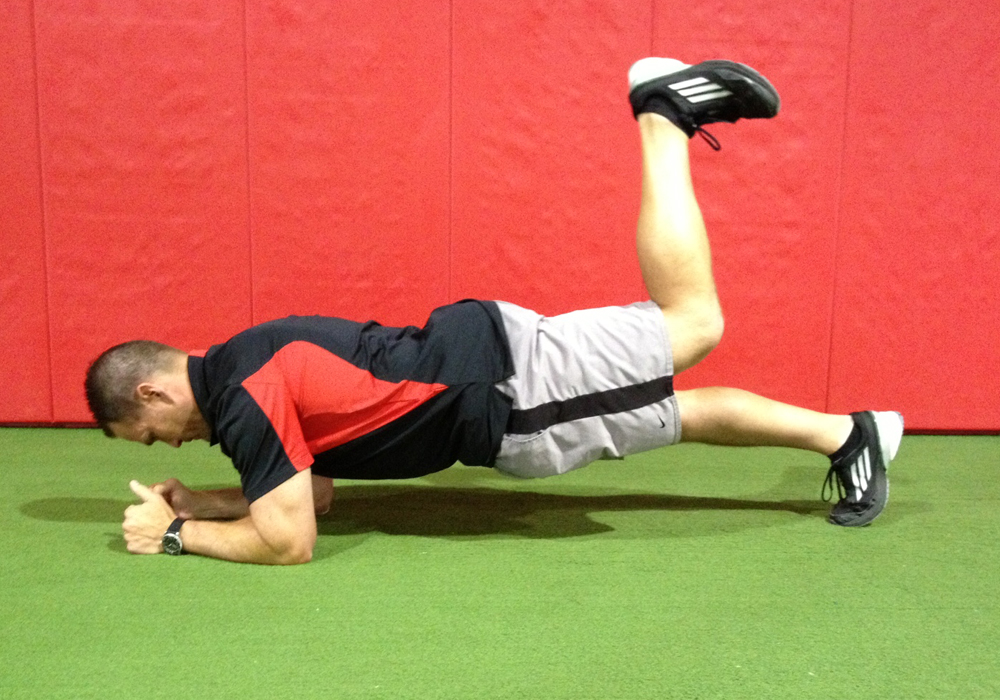
It is always preferable to include exercises that activatethe gluteus maximus and medius in training programs. Research has shown that poor hipactivation/control leads to frontal plane knee collapse and may lead toexcessive strain on the knee.
In a previous column, I discussed the side plank with hipabduction as an excellent choice for the gluteus medius based on EMGactivation. Here, I am covering thefront plank with hip extension based on muscle activation findings by Boren etal in the saem study that referenced the side plank with hip abduction.
In original research published in the International Journalof Sports Physical Therapy (September 2011) researchers looked at various rehabexercises and activation of the gluteus medius and maximus muscles. Surface EMG was used in the study.
Note: The percentages of MVIC (maximal voluntary musclecontraction) recorded for top exercises were 106% for the front plank with hipextension followed by the gluteal squeeze at 81% (a distant second). Side plank with dominant leg and non-dominantleg were 3rd and 4th, with a single leg squat rounding out the top five.
Execution:
Begin in prone plank position with the trunk, hips, and knees in neutralalignment. Next, lift the left leg off of the ground, flex the knee of the leftleg, and extend the hip past neutral hip alignment by bringing the heel towardthe ceiling. Hold for one second at thetop and then return to parallel for one second. Repeat 5-10 times on each side and then repeat on the other side.
Application:
Thisexercise is designed to strengthen the gluteus maximus. Improving hip extensorstrength will improve dynamic hip stability and reduce unwanted strain on theknee. This has particular relevance forfemale endurance runners who tend to experience patellofemoral pain as studiesindicate thy have decreased hip extension strength. Additionally, clients will improve corestability and strength performing this exercise.
Regression:
For those clients who struggle with form andendurance, you may opt for a quadruped version. The cadence in the study references 2 beats (as opposed to one in thefront plank). MVIC is 60% so this isstill a good way to elicit moderate muscle activity until the client canadvance to the front plank with hip extension.
Reference
Boren K, Conrey C, Le Coguic J, et al. ElectromyographicAnalysis of Gluteus Medius and Gluteus Maximus During Rehabilitation Exercises.International J Sports Phys Ther. 2011; 6: 206-223.
Brian Schiff, PT, OCS, CSCS, is a licensed physical therapist, respected author and fitness professional. Currently, he serves as the supervisor for Athletes' Performance at Raleigh Orthopaedic in Raleigh, NC. Brian conducts live continuing education webinars and presents nationally at professional conferences and seminars on injury prevention, rehab and sport-specific training. For more information on his products and services, visit www.BrianSchiff.com.
In a previous column, I discussed the side plank with hipabduction as an excellent choice for the gluteus medius based on EMGactivation. Here, I am covering thefront plank with hip extension based on muscle activation findings by Boren etal in the saem study that referenced the side plank with hip abduction.
In original research published in the International Journalof Sports Physical Therapy (September 2011) researchers looked at various rehabexercises and activation of the gluteus medius and maximus muscles. Surface EMG was used in the study.
Note: The percentages of MVIC (maximal voluntary musclecontraction) recorded for top exercises were 106% for the front plank with hipextension followed by the gluteal squeeze at 81% (a distant second). Side plank with dominant leg and non-dominantleg were 3rd and 4th, with a single leg squat rounding out the top five.
Execution:
Begin in prone plank position with the trunk, hips, and knees in neutralalignment. Next, lift the left leg off of the ground, flex the knee of the leftleg, and extend the hip past neutral hip alignment by bringing the heel towardthe ceiling. Hold for one second at thetop and then return to parallel for one second. Repeat 5-10 times on each side and then repeat on the other side.
 |  |
Application:
Thisexercise is designed to strengthen the gluteus maximus. Improving hip extensorstrength will improve dynamic hip stability and reduce unwanted strain on theknee. This has particular relevance forfemale endurance runners who tend to experience patellofemoral pain as studiesindicate thy have decreased hip extension strength. Additionally, clients will improve corestability and strength performing this exercise.
Regression:
For those clients who struggle with form andendurance, you may opt for a quadruped version. The cadence in the study references 2 beats (as opposed to one in thefront plank). MVIC is 60% so this isstill a good way to elicit moderate muscle activity until the client canadvance to the front plank with hip extension.
Reference
Boren K, Conrey C, Le Coguic J, et al. ElectromyographicAnalysis of Gluteus Medius and Gluteus Maximus During Rehabilitation Exercises.International J Sports Phys Ther. 2011; 6: 206-223.
Brian Schiff, PT, OCS, CSCS, is a licensed physical therapist, respected author and fitness professional. Currently, he serves as the supervisor for Athletes' Performance at Raleigh Orthopaedic in Raleigh, NC. Brian conducts live continuing education webinars and presents nationally at professional conferences and seminars on injury prevention, rehab and sport-specific training. For more information on his products and services, visit www.BrianSchiff.com.















